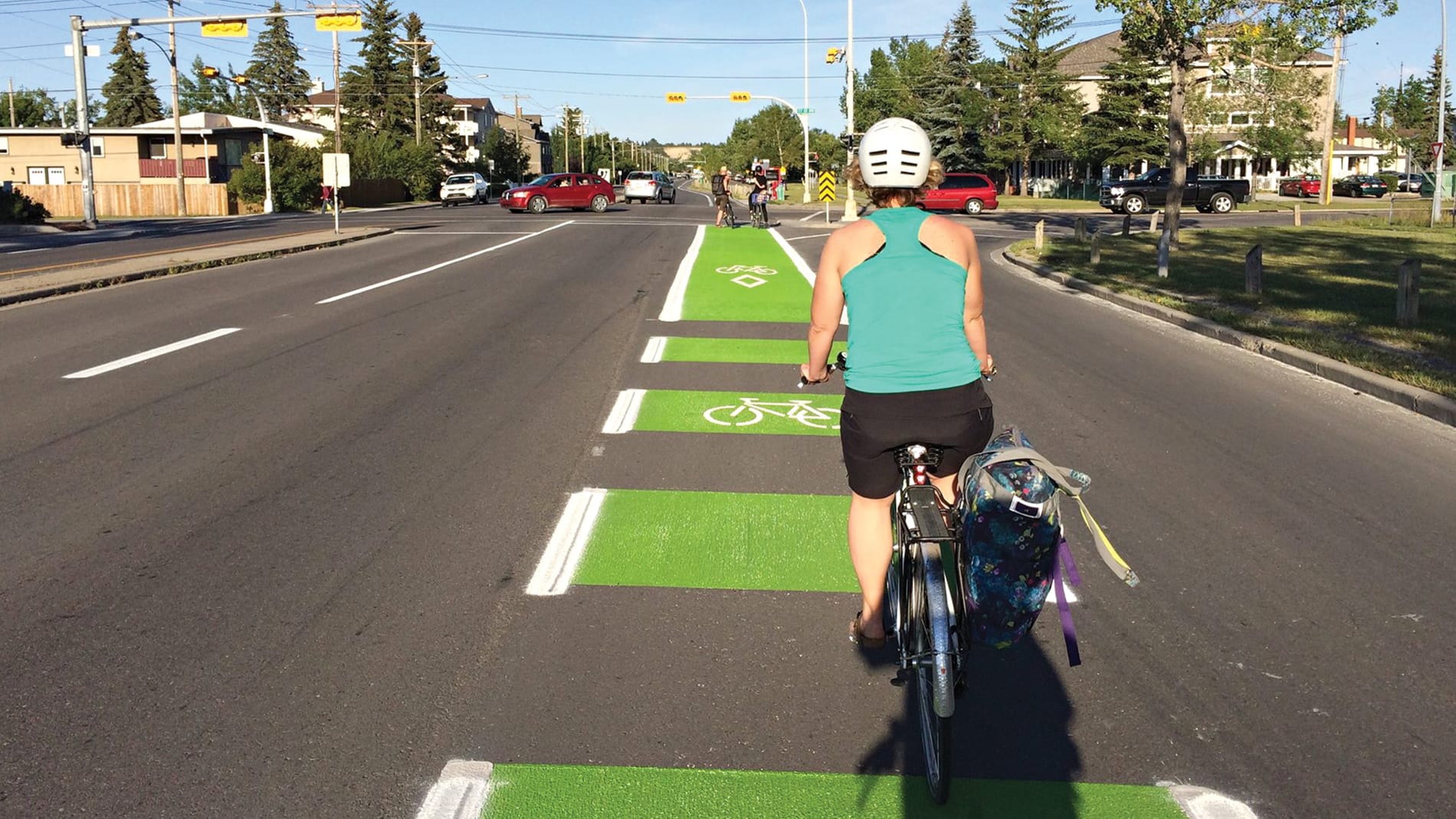Roads can be dangerous places. Drivers, cyclists and pedestrians all need to share space without getting in each other’s way. The challenge for planners is how to safely separate these road users.
It’s often the little things that make all the difference. “We heard from cyclists that on provincial highways, it’s tough for them to ride on the shoulder because that’s where the rumble strips are,” says Wendy Doyle, executive director of Alberta’s Office of Traffic Safety. “They sometimes have to ride in the lane to avoid the strips. So our engineering group is going to put rumble strips right on the painted line—keeping the shoulder clear for cycling.”
Sometimes it’s the big stuff that matters: pedestrian underpasses, or roundabouts instead of traffic junctions. “If you take away the opportunity for a right-angle crash, you really reduce fatalities and serious injuries,” Doyle says. “People may dislike roundabouts, but they’re effective.”
To reduce injuries and fatalities around the province, Alberta began implementing a traffic safety plan in 2007. The effort is paying off: An independent evaluation found that the combination of infrastructure and legislative changes—plus public-awareness campaigns—saved 946 lives and prevented 7,443 serious injuries between 2008 and 2015.
Calgary and Edmonton both re-designated school zones as playground zones, as planners recognized that schools are used in the evenings for extracurricular activities. Those zones now have reduced speed limits of 30 km/h that are in effect longer—from 7:30 a.m. to 9 p.m. daily, year-round.
MORE TO READ
Big trucks, blind spots and road safety concerns
“There were a number of collisions involving young pedestrians after one hour past sunset [the previous end time for playground zones], and typically before 9 p.m.,” says Tony Churchill, Calgary’s leader of traffic safety. The problem was especially evident in winter months. “People perceive that there are no pedestrians, but it might be that they just can’t see the pedestrians,” he adds.
The two cities have also created dedicated bike-path networks in their downtown cores, physically dividing cyclists from cars with raised curbs and separate traffic signals. They’ve proven popular with cyclists, especially in Calgary, where many now use the paths even in winter.
Of course, the biggest road-safety challenges can’t be fixed by city planners. Driver error is still the major cause of collisions, due to poor decision-making, increased distractions and overall complacency behind the wheel.
“To operate in an urban environment is extremely challenging,” Doyle says. “It’s a question of how well we can multitask in those complex situations: watching pedestrians, and cyclists, and alleys, and lights, and all of this interacting at the same time.”
MORE TO READ
How dashboard computers contribute to distracted driving
With Alberta roads busier than ever, it’s on all of us to be more focused and capable of handling our vehicles safely, no matter what’s occurring on the road.
“It’s important for everyone, however they get around, to recognize that we’re all human, and we all make mistakes,” Churchill says. “The defensive driving techniques that we’re taught as motorists should extend to all modes of travel—watch out for others when they make a mistake.”
